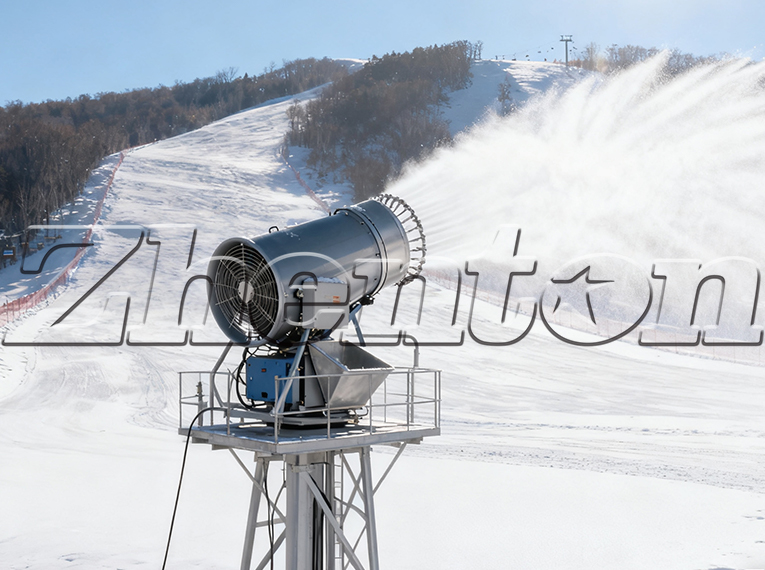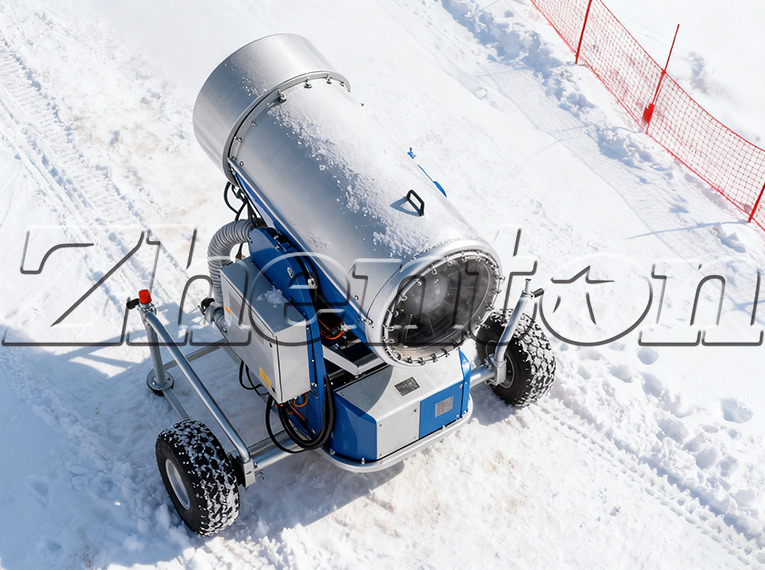The snowmaking machine is the core equipment of the artificial snowmaking system in ski resorts, and its stable operation directly determines the quality of snow and the availability of ski slopes. The following sections outline an efficient snowmaking plan from two aspects: working principle and practical operation specifications.
The core working principle of the snowmaking machine is based on the "water droplet freezing" technology. The equipment uses a high-pressure water pump to pressurize water to 10-15 MPa, which is then atomized into tiny water droplets with a diameter of 50-100 microns through nozzles. At the same time, a fan generates high-speed airflow to transport the atomized water droplets into the air. When the ambient temperature is below -2°C and the relative humidity is below 80%, the water droplets fully contact the cold air during the falling process and quickly freeze to form ice crystals, which are artificial snow. Some high-end equipment is equipped with nucleators that generate "seed ice crystals" by spraying refrigerants, enabling snowmaking to start in critical environments above -1°C and improving environmental adaptability.

The usage specifications must follow the "three priorities" principle. First, before starting the machine, check the equipment status: ensure there is no ice in the water pipes, no blockages in the nozzles, the fan and water pump operate normally, and the hydraulic system pressure is stable within the specified range. Second, select the right time for snowmaking: prioritize low-temperature periods at night and avoid windy or rainy weather to ensure snowmaking efficiency and snow quality. When starting the machine, first activate the fan for 3 minutes of preheating, then turn on the water pump to supply water. Adjust the water pressure and air volume according to the ambient temperature: the lower the temperature, the appropriately higher the water pressure can be to increase the density of atomized droplets; in case of strong winds, increase the fan power to ensure uniform scattering of snow particles.
Real-time monitoring is required during operation: use a snow quality sensor to detect the moisture content of snow particles, keeping it between 8% and 12% to avoid "wet snow" or excessively dry "powder snow". Adjust the snowmaking angle according to the needs of the ski slope: use horizontal spraying for the main ski slopes, and raise the nozzles in the buffer area to increase the snow layer thickness. After shutting down the machine, completely drain the residual water in the equipment, turn off the main power supply and water source, and take anti-freezing protection measures for the equipment.

By scientifically mastering the working principle of the snowmaking machine and standardized operation procedures, high-quality artificial snow can be efficiently produced in suitable environments, ensuring the snow quality of ski slopes and the operation cycle of the ski resort.











